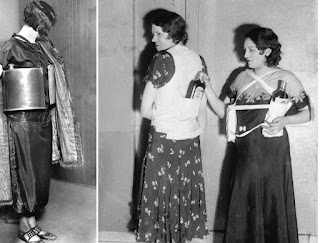A Condensed Timeline of Prohibition
This era began with the ratification of the Eighteenth (18th) Amendment on January 16, 1919.
- In simplistic terms, the 18th Amendment prohibited “the manufacture, sale, or transportation of intoxicating liquors” but did not ban the consumption, private possession, or production for one’s own consumption.
- Also known as the Volstead Act, the National Prohibition Act provided guidelines for the federal enforcement of Prohibition.
- It also defined an intoxicating beverage as anything that contained more than one half of one percent of alcohol.
- The Volstead Act had a number of loopholes to exploit, which made it completely ineffective by January 17,1920.
- This Act also raised the legal alcohol percentage from one half of one percent to 3.2%
Prohibition, and subsequently the 18th Amendment, were repealed with the ratification of the Twenty-First (21st) Amendment on December 5, 1933 - thirteen years after it first began.

Comments
Post a Comment